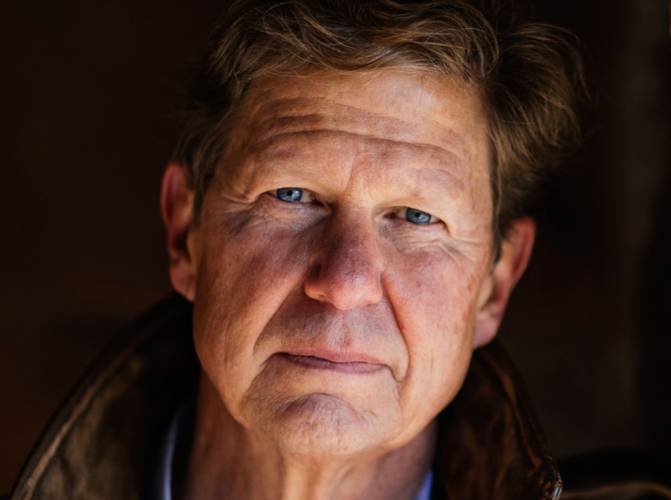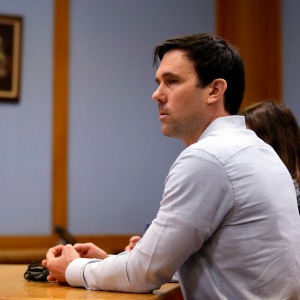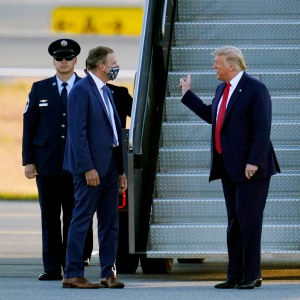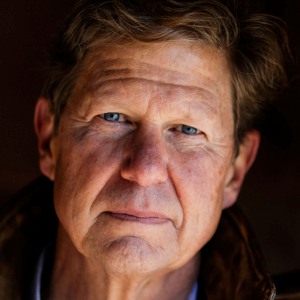By the Way: Music drew me to the Episcopal Church

Randall Balmer. Copyright (c) Valley News. May not be reprinted or used online without permission. Send requests to permission@vnews.com.
| Published: 03-01-2024 5:43 PM |
Sometimes I’m asked how someone who grew up evangelical—a fundamentalist, really—became an Episcopalian and eventually an Episcopal priest. I typically reply with a semi-flippant answer: It was a reaction to the aesthetic deprivation of my childhood.
That’s not entirely inaccurate.
I love and appreciate the old gospel hymns of my childhood: “Tell Me the Old, Old Story,” “Let the Lower Lights Be Burning,” “Blessed Assurance,” “Softly and Tenderly, Jesus Is Calling,” or “Bringing In the Sheaves,” which for many years I thought was my mother’s laundry song from the clothesline in our rural southern Minnesota yard, “Bringing In the Sheets.”
But about the time I graduated from college and headed to graduate school in the late 1970s, evangelical worship was moving decisively away from those old standards toward an embrace of something that has come to be called praise music, which my friend Tony Campolo characterizes as four notes, three words, two hours.
Evangelical congregations began discarding hymnals in favor of overhead projectors and then fancy PowerPoints with the lyrics magically appearing onscreen against the background of amber waves of grain or shimmering sunsets. No longer anchored by hymnals, suddenly buoyant hands and arms could reach toward the sky.
Congregational singing, once a staple of evangelical worship, became incidental, especially with the cult of amplification. “Praise bands” or “worship teams” moved in. The organ gave way to drums and guitars. The piano was replaced by an electronic keyboard.
Because of the persistent patriarchy in evangelicalism, these praise bands were initially dominated by men, although they eventually allowed women on stage, typically clutching a microphone in one hand, head tilted upward with eyes closed, the other hand reaching toward the ceiling.
This is about the time I discovered the Episcopal Church.
Article continues after...
Yesterday's Most Read Articles
I was a graduate student in Princeton, and one Sunday I decided to visit Trinity Church, just a couple of blocks from my apartment. I entered the red wooden doors somewhat tentatively, for this was new territory and I was not sure what to expect.
Almost immediately, I felt as though I’d come home. The space itself, so unlike the warehouses then popular among evangelicals, suggested that something important happened there, although I wasn’t sure back then what it might be.
In time, I recognized that the Eucharist lay at the center of Episcopal worship, not the sermon. The altar was central, not the pulpit. As a historian, I loved the sense of connection with the past. Evangelicals in their endless pursuit of innovation, were always experimenting: “Let’s try something new!” I had grown tired of this cult of novelty and was ready to try something old.
The prayers, many dating back centuries, were stately and poetic, not the “Lord, we just wanna’ ” that had become commonplace among evangelicals. I immediately became enamored of the cadences of the Book of Common Prayer.
Most of all, however, I loved the music, especially the soaring descants of the Anglican choral tradition, which of course built upon the earlier musical styles of both Catholicism and the Reformation. Music in this space was reverent and holy, more worship than performance.
That, I came to realize, was an idealized view. When I became a rector in my own right many years later, I learned that some musicians in Episcopal churches fancied themselves performers rather than choristers. The production of transcendent music very often requires reining in some Montana-size egos.
But the effort pays off. Some years ago, I sat in on the final rehearsal for Nine Lessons and Carols, the Christmas Eve performance of the King’s College Choir in Cambridge.
The director at the time, Stephen Cleobury, worked tirelessly to blend these magnificent voices into a coherent whole, an effort that required discipline and more than a few admonitions.
The result, however, performed before a crowded chapel and broadcast around the world the following afternoon, was sublime and unforgettable. “The Anglican choral tradition is one of the glories of Western civilization,” I wrote at the time, “and if there is a more heavenly sound than a soaring descant, I have no clue what it might be.”
St. Augustine once said that singing is praying twice. From time to time, I’ve reminded congregations that, with the exception of the Eucharist, singing is the holiest thing we do because it takes the air we breathe, which is life itself, and transforms it into music.
You can call it magic, if you wish, the alchemy of diverse voices. I think it’s a form of grace.
Randall Balmer, an Episcopal priest, is the John Phillips Professor in Religion at Dartmouth.

 Editorial: Parker parole a reminder of how violence reshapes our lives
Editorial: Parker parole a reminder of how violence reshapes our lives Editorial: Chris Sununu’s moral vacuum
Editorial: Chris Sununu’s moral vacuum Editorial: Gambling tarnishes America’s sporting life
Editorial: Gambling tarnishes America’s sporting life By the Way: A white nationalist’s many mistruths
By the Way: A white nationalist’s many mistruths
